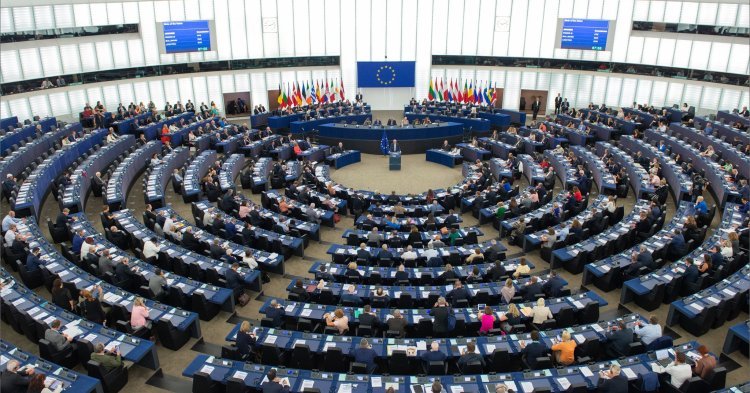Liberal conservative EPP experience a small rise after months of losses
Even though the largest group in the chamber would still lose a fair share of its current 219 seats, Europe Elects projection predicts an undisputed first position with a total of 181 out of 705 MEPs, thus performing slightly better than in the August projection.
These improved prospects come just two months before the European People’s Party Congress, to be held in Helsinki, Finland, on 7-8 November 2018. As it was agreed in the last Political Assembly, this meeting will deliver a spitzenkandidat for the party, and nominations began on 6 September. The candidate will aim at achieving as much success as its predecessor, Jean-Claude Juncker, even though it will face a much more polarized European Parliament: Europe Elects predicts a combined loss of more than 90 MEPs between EPP and S&D groups.
At the same time, the EPP group has had a difficult few weeks after the vote in the European Parliament on triggering sanctions against Viktor Orban’s government in Hungary. Thus, in 12 September the legislative voted on pursuing actions included in Article 7 of the Lisbon Treaty for violations of the rule of law and a breach of civil liberties. A majority of 448 to 197 voted in favor, including most of the EPP members: only 57 of their MEPs voted against the measure. This surprising move comes just some months after a Political Assembly where the group congratulated Orban for its last electoral victory in Hungary , and has seen leading figures such as Manfred Weber, a favourite to become spitzenkandidat, position against its fellow EPP member.
S&D reduce losses but continue to poll poorly
The centre-left alliance of Socialists and Democrats would obtain, according to Europe Elects projection, a total of 134 MEPs, 55 below the 2014 election result. The rising popularity of the Spanish Socialists works in favour of the second largest group of the Parliament, after taking over government last June, but the loss of the UK Labour Party through Brexit and the severe crises in the German SPD, Italian Democratic Party and French Socialist Party hinder its recovery.
The task of reversing the poor trend will fall on the shoulders of the Party of European Socialists spitzenkandidat, to be chosen in a Congress in Lisbon, in 7-8 December 2018. Candidates will need the support of their own party and at least the 25% of the rest of members. Marcos Šefčovič, current EU Comissioner for Slovakia, and Christian Kern, former Chancellor of Austria, have already announced their candidacies.
ALDE consolidate their position
Although the huge growth the group of liberals had experienced in the previous months has come to a halt, Europe Elects projection puts them at an uncontested third position, with a total of 100 MEPs. Liberal parties in France, Spain or the Netherlands have polled strongly in the recent months, offering bright prospects for ALDE.
However, Macron’s LREM position on running together with ALDE is still unresolved. While both Macron and Verhofstadt, current leader of the liberals, agree in the criticism towards the spitzenkandidat process, there is uncertainty about a possible agreement to join the same EP group. The result of this process of negotiation could prove crucial for the final composition of the chamber.
If no further changes take place, ALDE should confirm their spitzenkandidat, probably part of a team of candidates, in the Electoral Congress in February 2019 that will also serve as the campaign kick-off.
GUE/NGL and ENF to compete for the fourth place
Europe Elects predicts a result of 61 MEPs for the left group and 57 MEPs for far-right ENF, up from 51 and 35 in 2014, respectively. These gains would allow both groups to dispute over the fourth position in number of MEPs and thus might have a say in major decisions voted by the chamber.
Marine Le Pen’s ENF recent soar can be explained by the surge in popularity experienced by the Italian Lega Nord, member of the government after last March elections and polling strongly in the past weeks. This adds to the French National Rally already consolidated position in the European Parliament after its victory in France in 2014.
Neither the European Left (GUE/NGL group) nor Le Pen’s MENF (ENF group) have yielded a spitzenkandidat yet. In 2014, Alexis Tsipras was running for the EU’s top job for the Left in Europa.
ECR minimize losses in the midst of spitzenkandidat election process
The national conservative group of European Conservatives and Reformists would achieve, according to the latest Europe Elects projection, a total of 49 seats. If it is true that it is 24 MEPs below the 2014 benchmark, they seem to have mitigated the loss of representatives from the UK Conservatives by welcoming the Sweden Democrats to the group. However, the threat remains that in a scenario of poor results several right-wing parties will abandon the group only to join the ranks of the more right-wing ENF.
ACRE, party affiliated with ECR, will choose a candidate for the Commission Presidency by a vote of its Council, and the final spitzenkandidat will be announced on 18 October 2018 at a conference in Brussels. After Jan Zahradil’s decision to pull out of the race, the only candidate running for ACRE is the German MEP Hans Olaf Henkel. The Christian fundamentalist party on the European level ECPM, another member of the ECR group in the European Parliament, is also considering yielding a candidate.
G/EFA to survive, EFDD might face its end
G/EFA is set to become the smallest group in the Parliament, with a predicted result of 37 MEPs, down from 52 in 2014. The fact that the German Alliance 90’/The Greens has seen some growth in the latest polls and their reliance on MEPs from 13 different member states, however, rules out their disappearance. Their spitzenkandidat will come out of the race between MEPs Bas Eickhout, Ska Keller, and Flemish Petra de Sutter as well as German-Bulgarian Atanas Schmidt.
In a much more difficult position do members of the EFDD group find themselves. Even though Europe Elects predicts 47 MEPs for the Eurosceptic group, discontent within Italy’s Five Star Movement might led them to follow in Sweden Democrats’ footsteps and leave the group. Without the UK parties this would jeopardize EFDD’s future, failing to achieve the minimum requirement of members from 7 EU countries.
Most of the EFDD parties would most probably join the ENF or the ECR group. Other political parties on the European level, like the regionalist European Free Alliance (G/EFA group), the centrist European Democratic Party (ALDE group), the ultranationalist group Alliance for Peace and Freedom or the right-wing extremist Alliance of European National Movements (both NI group) have yet yielded a spitzenkandidat.


Follow the comments: |
|
